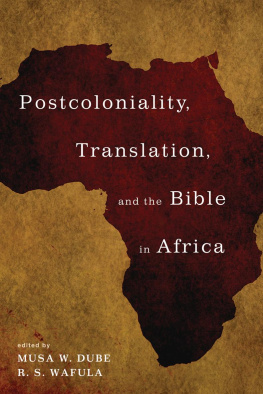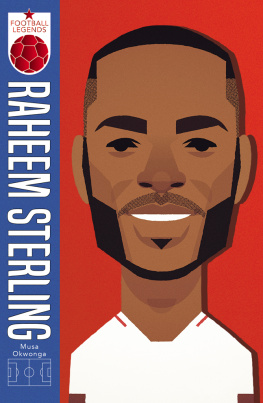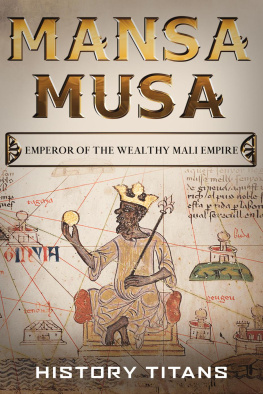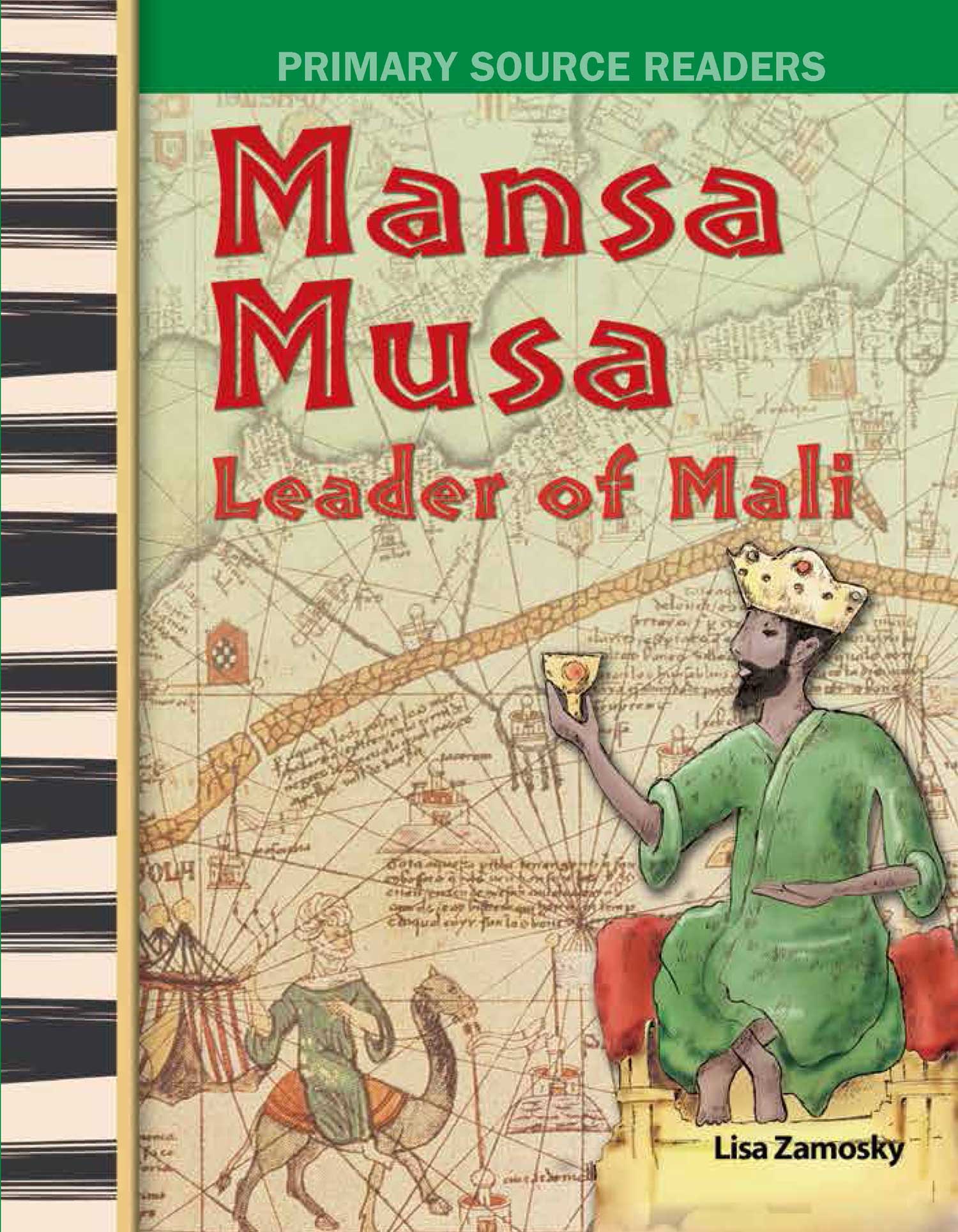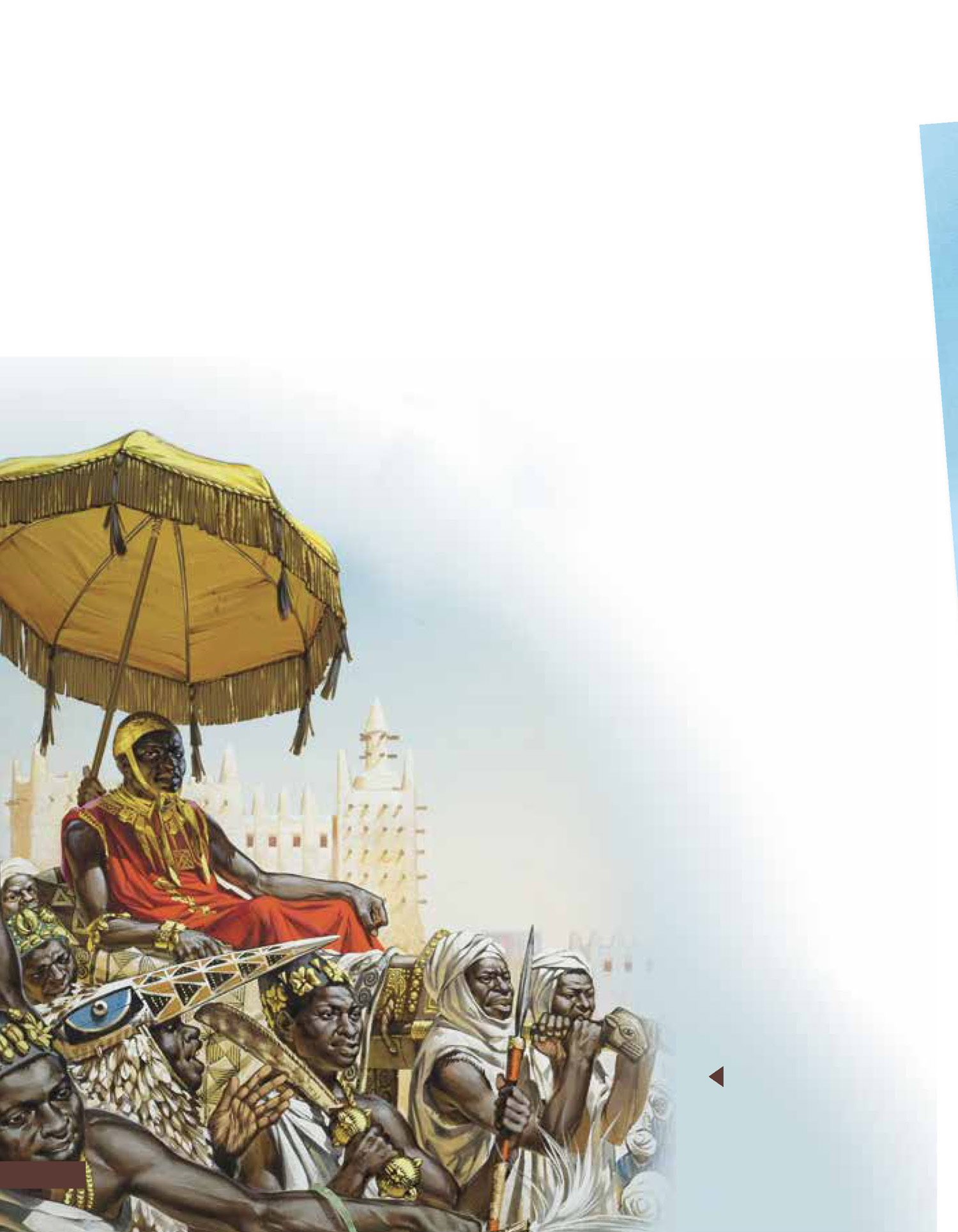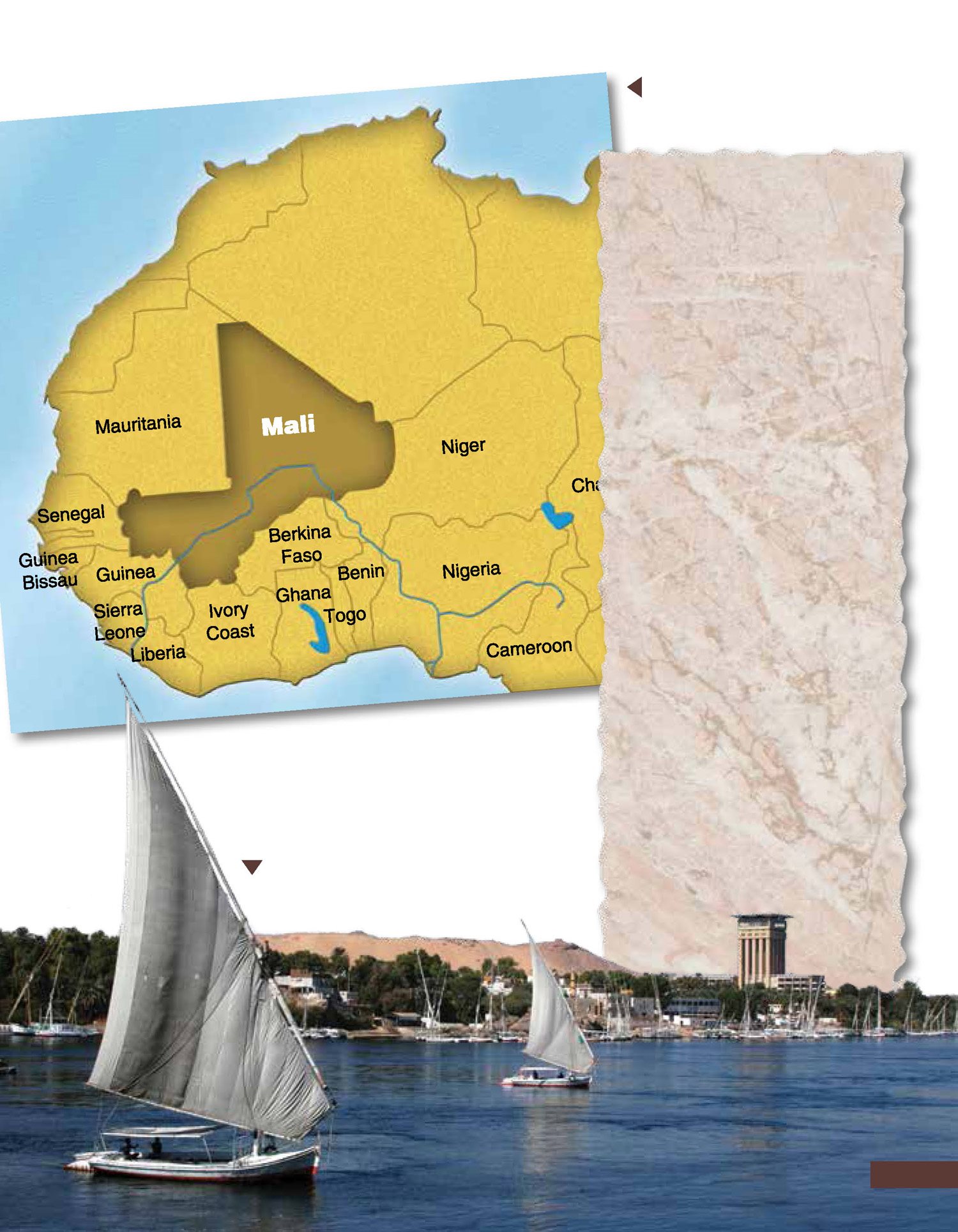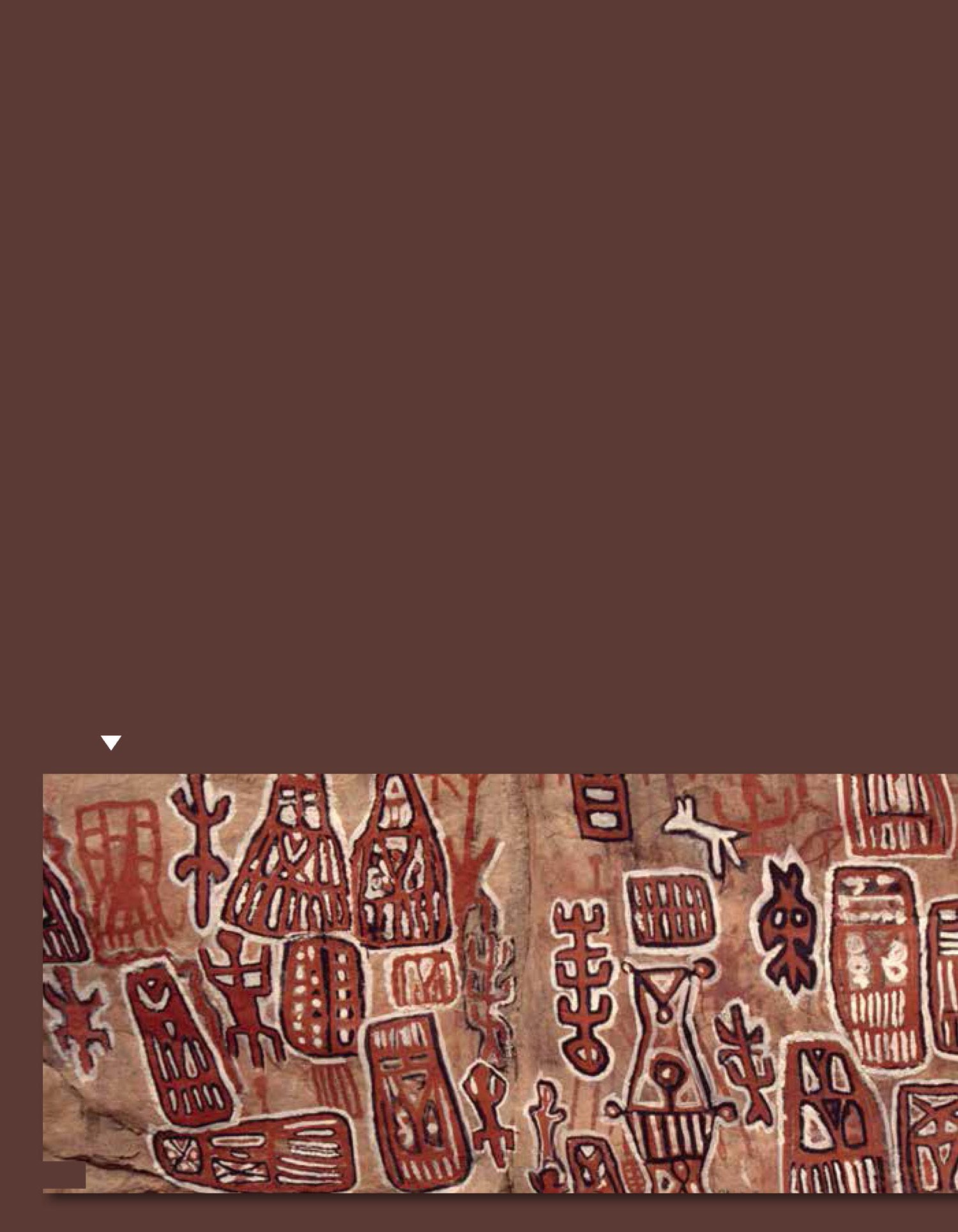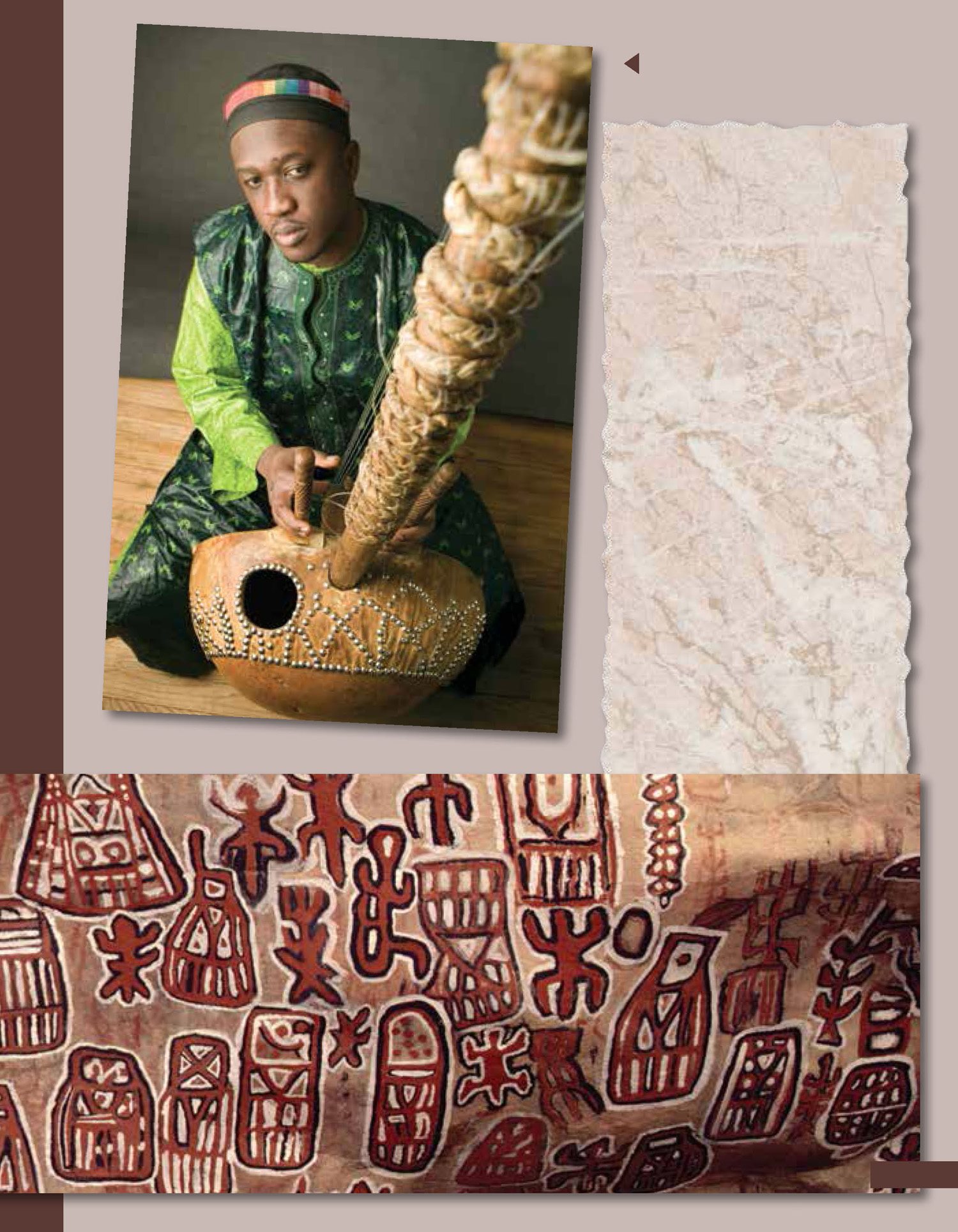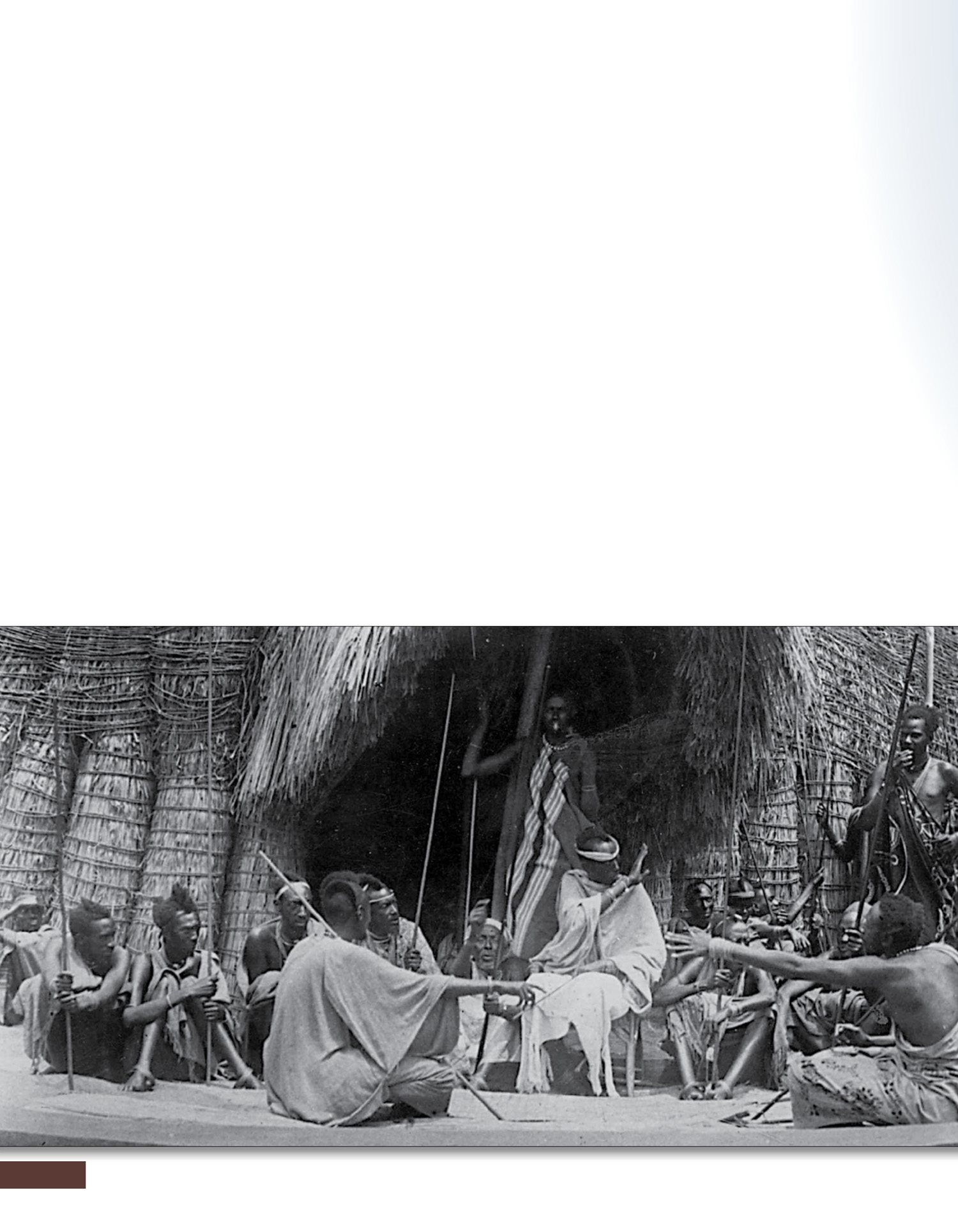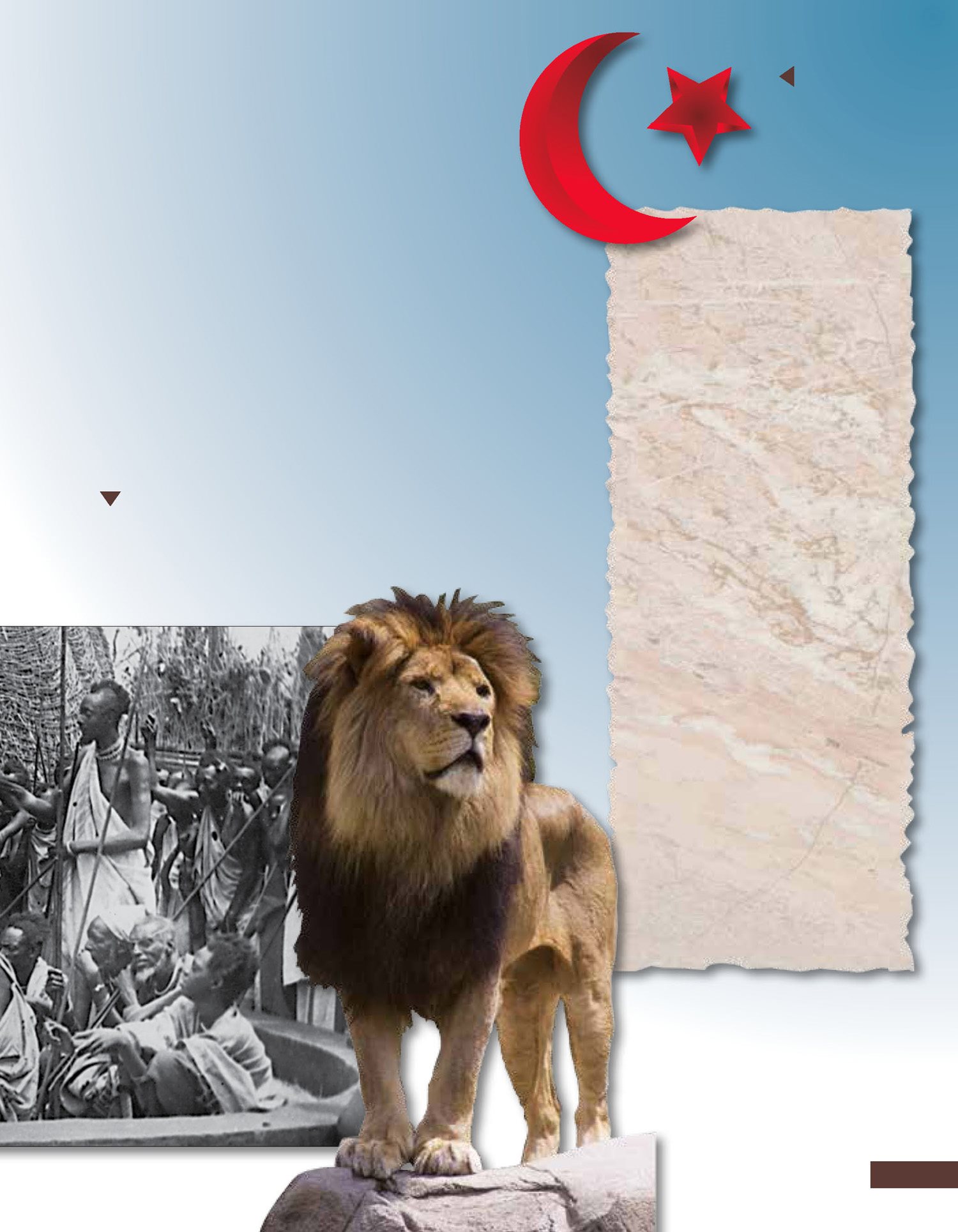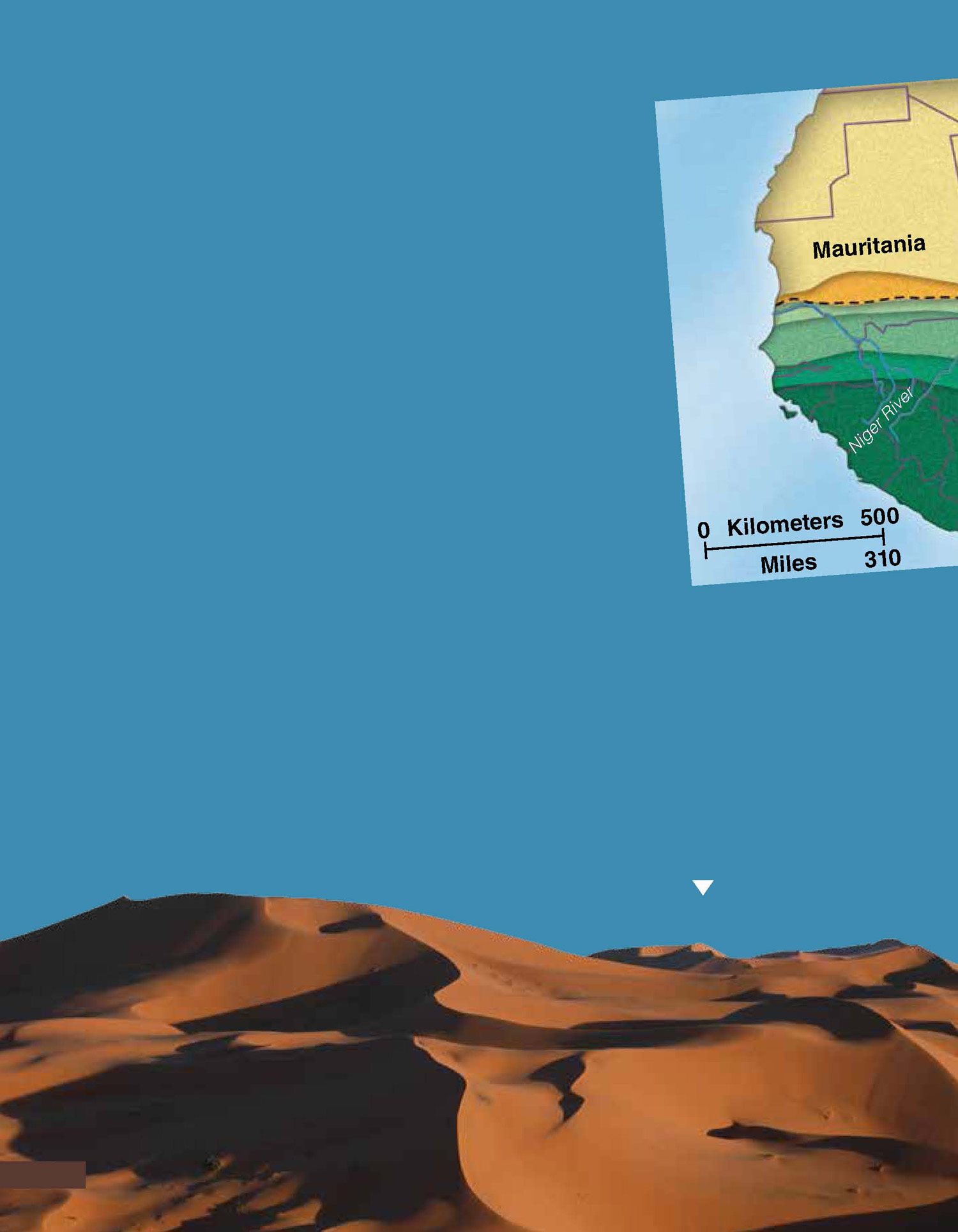Publishing Credits
Associate Editor
Christina Hill, M.A.
Assistant Editor
Torrey Maloof
Editorial Assistants
Deborah Buchanan
Kathryn R. Kiley
Judy Tan
Editorial Director
Emily R. Smith, M.A.Ed.
Editor-in-Chief
Sharon Coan, M.S.Ed.
Editorial Manager
Gisela Lee, M.A.
Creative Director
Lee Aucoin
Cover Designer
Lesley Palmer
Designers
Deb Brown
Zac Calbert
Amy Couch
Robin Erickson
Neri Garcia
Publisher
Rachelle Cracchiolo, M.S.Ed.
ePUB ISBN 978-1-5457-0198-0
Teacher Created Materials
5301 Oceanus Drive
Huntington Beach, CA 92649-1030
http://www.tcmpub.com
ISBN 978-0-7439-0439-1
2007 Teacher Created Materials, Inc.
Reprinted 2013
Table of Contents
Mansa Musa
Mansa Musa (MAHN-suh MOO-suh) was an African king.
The word mansa means emperor. Mansa Musa ruled Mali
(MAW-lee) from 1312 to 1337. During his years in power, Musa
helped Mali to grow.
Mali is located in western Africa. It was one of the largest
empires in the world at that time. Mali was at the peak of its
power during these years.
In Musas day, not many people traveled
far from home. When they did, they brought
back things from other lands. And, they
told stories about the people they saw.
Western Africa was one area that the
rest of the world did not know much
about. Musa would change that
during his time in power.
Musa was
honored by
his people.
Map of western
Africa today
Modern Mali
There is still a country
called Mali. Today, its
borders are different than
they were during Mansa
Musas time. Present-day
Mali is the largest country
in West Africa. It is nearly
twice the size of the state
of Texas.
The Nile River
The longest river in Africa
is the Nile. In ancient
times, people relied
on the Nile to help the
Egyptian (ih-JIP-shuhn)
civilization (siv-uh-luh
ZAY-shuhn) survive.
Today, Africans still
depend upon its water
for food, energy, and
transportation.
The Nile today is very different
than it was in Musas life.
Griots Keep
History Alive
During Mansa Musas time, people did not write about their lives
very often. The events of a kings life were shared by griots (GREE
ohz). These people told stories about kings.
Africans shared stories orally for thousands of years. This was how
most Africans learned about their history.
Arab Muslim (MUHZ-luhm) traders came to Mali. These
men wrote the few stories that do exist about Musa. There are also
some buildings, artwork, and statues left from his time in power.
Archaeologists (awr-key-AWL-uh-jists) who visit Mali find these items.
Ancient Africans wrote about their lives through pictures like these.
This griot tells ancient
stories today.
Modern-Day Griots
In Mansa Musas time,
each family had its own
griot. Today, there are still
griots in Africa. They play
music or sing and dance
as they tell their stories.
Just a Few Things
Only a few buildings,
pieces of art, and writings
from Mansa Musas time
are left today. Historians
have found rock paintings
in Mali that were done
in ancient times. These
pieces of art give clues
about life in Mali during
Musas rule.
A Powerful Family
In Mansa Musas time, there were clans . These were family groups
who lived in western Africa. Clans lived together in small villages. Each
clan had a special job. Some farmed, and others hunted.
Musas family members were some of Malis greatest leaders. He
was born into a clan called Keita (KAY-ee-tah). This was a family of
rulers. It was a very powerful family.
Sundiata (soon-JAH-tuh) was a very famous ruler of Mali.
Historians believe that Sundiata was Musas grandfather. Sundiata was
very powerful. He helped Mali become a strong kingdom .
Musa was named Kankan Musa
as a child. His name changed to
Mansa Musa when he became ruler
of the Mali people. Today, hes only
referred to as Mansa Musa.
Clans held
meetings like
this one to solve
problems.
The star and
moon is the
symbol of
Islam.
Grandfather
Sundiata
Sundiata made an
important decision for
his empire. He chose
to convert to Islam (is
LAWM). From then on,
the Mali rulers were
Muslims. Mansa Musa
was the most famous
Mali ruler.
Lion King
The lion was the symbol
of the Keita clan. Sundiata
was sick as a child. But he
grew strong and became
a powerful leader. He
was known as the Lion
King. This name lives on
as a symbol of his great
leadership.
Growing Mali
Mali grew when Mansa Musa was king. He
took charge of a large area of western Africa.
Mali was close to the Niger (NI-juhr) River. This
is part of the Sahel (SAH-hil) region of western
Africa. This region is just south of the Sahara
(suh-HAWR-uh) Desert. The Sahara is the
largest desert in the world.
The Sahara is very hot and dry. So, it is
difficult for farmers to grow crops there. But, it
rains in the Sahel region. The Sahel region can get
as much as 35 inches (88.9 cm) of rain in a year.
Unlike the Sahara, food, fish, and animals grow in
this region.
Niani (nih-AW-nih) was the capital of Mali. This city
was near the Niger River. Timbuktu (tim-buk-TOO) was
the center of Mali. Mansa Musa helped his empire grow
in size and culture. He encouraged the arts, architecture,
and literature.
The Sahara Desert



